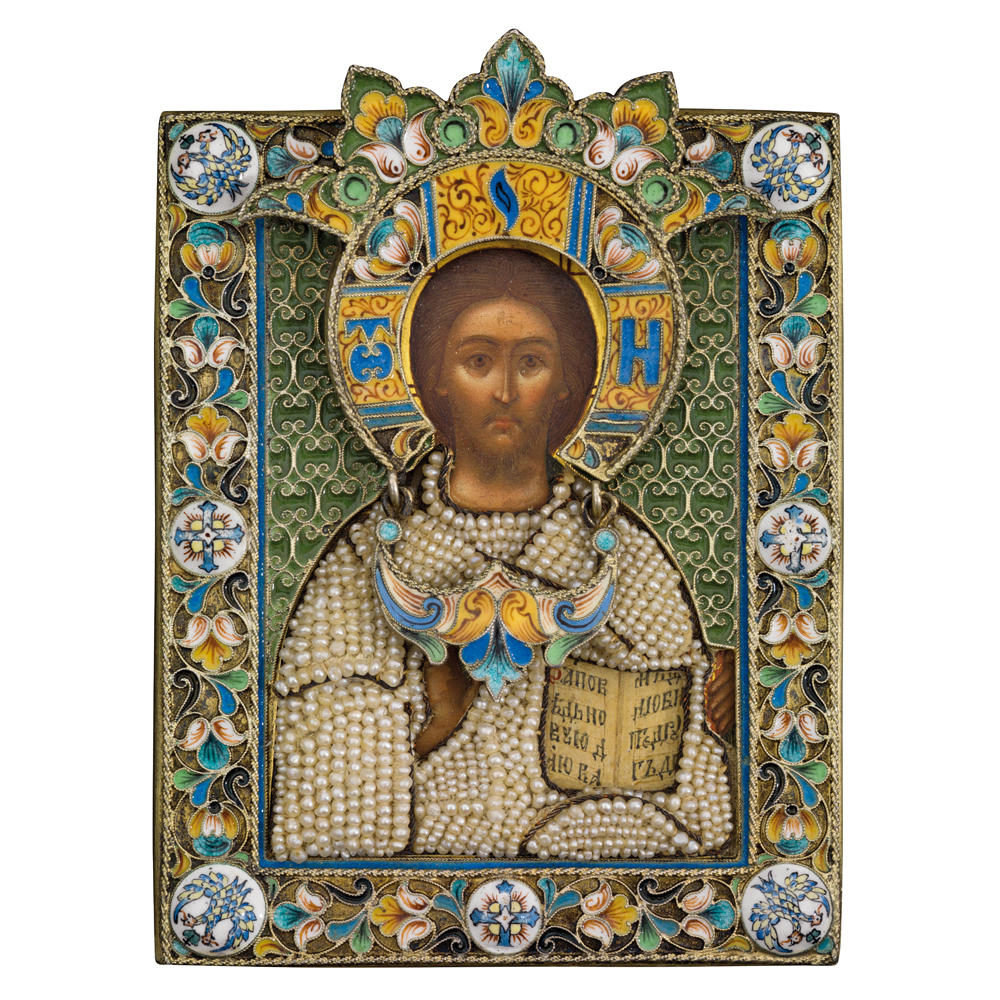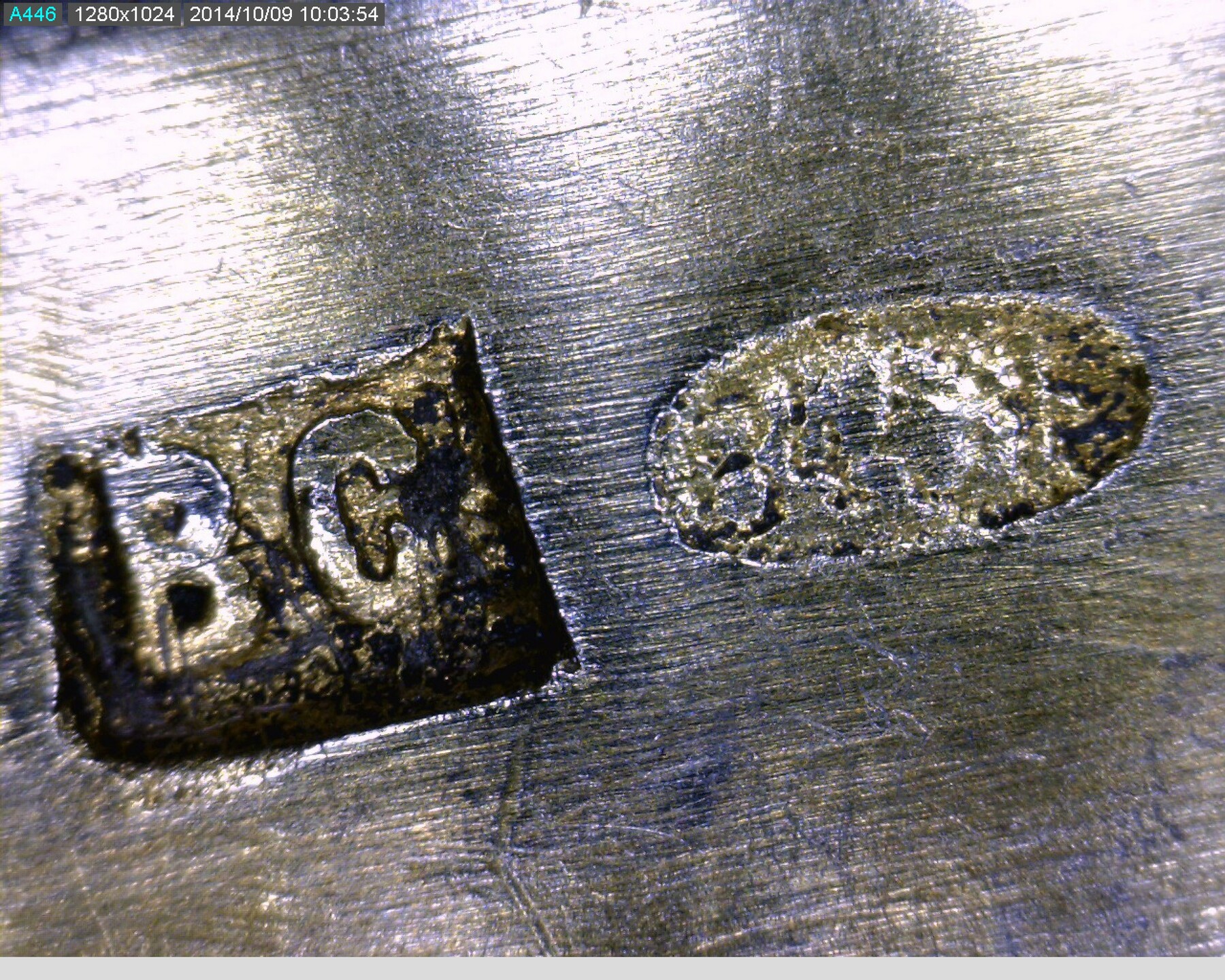26 November 2014 Russian Art Auctions
26 November 2014

401. AN IMPERIAL PRESENTATION MINIATURE ICON OF CHRIST PANTOCRATOR WITH A SILVER-GILT AND ENAMEL OKLAD AND RIVER-PEARL SHIRT
OKLAD STAMPED WITH MAKER’S MARK VS IN CYRILLIC, INDISTINCT TOWN MARK, 1899–1908, 84 STANDARD
10 by 7.5 cm.
30,000–50,000 GBP
This is a masterpiece of Russian jeweller’s art from the turn of the 19th and 20th centuries. The icon, painted by a master, follows the ancient
canons of Russian iconography, but is almost completely enclosed by the oklad with its borders, background, crowned halo, tsata pendant and pearl robes. The main features of the design, with its rich patterns and decorative motifs hark back to ancient Russian traditions and which were reinterpreted in the neo-Russian style, which dominated national art in the late 19th century. The interwoven plant and flower ornament, elegant lines, smooth tonal transitions and the overall colour scheme combining different shades of blue, green and yellow are all reminiscent of the best 17th century Moscow and Solvychegodsk enamels. The rich texture of the oklad is particularly striking with its bright enamel tsata set against the shimmering pearl background, the convex round plaques that punctuate the densely intertwined ornament, the yellow accented halo and the intricate crown emerging from the oklad and extending beyond the icon’s edges.
The crown and the round enamel border plaques are very rare on such late works and in themselves, the four corner plaques bearing the double-headed Imperial eagle, suggest a relationship with the Russian Imperial family. A commemorative inscription engraved on the sides of the oklad reads: "From Aprak, 27 July 1901, Gatchina", suggesting that the icon was a wedding gift to the Grand Duchess Olga Alexandrovna from Princess Alexandra Obolenskaya (née Apraksina). Alexandra Obolenskaya (1851–1943) was a maid of honour to Empress Maria Fedorovna (wife of Tsar Alexander III), and a close friend of the Empress and her children.
Letters to Alexandra Obolenskaya from both the Empress Maria Feodorovna (written in 1917–1927) and her daughters, the Grand Duchess Xenia Alexandrovna (written in 1884–1940) and Olga Alexandrovna (written in 1920–1939) have survived and been published. This correspondence is a valuable historical source. Obolenskaya is constantly addressed in the letters as “Dear Aprak” (the Princess’ maiden name).
Olga Alexandrovna was married to Prince Pyotr Alexandrovich, Duke of Oldenburg (1868–1924) on 27 July, 1901 in the palace church at Gatchina. Close relatives were invited. Nicholas II wrote in his diary for that day: “Olga and Petya received their gifts after the ceremony and then rested.” It is highly likely that gifts included this precious, miniature Pantocrator icon, which Alexandra Obolenskaya had ordered especially. The elegance and sophistication of this rich gift demonstrates the warmth between the two women.
Olga Alexandrovna’s marriage proved unsuccessful. On 27 August, 1916, Nicholas II approved an edict dissolving the marriage. Olga then worked as a nurse in Gatchina during World War I where she met Nikolai Kulikovsky, an officer of the Cuirassier Regiment. He became her husband on 4 November 1916.

Notes on symbols:
* Indicates 5% Import Duty Charge applies.
Ω Indicates 20% Import Duty Charge applies.
§ Indicates Artist's Resale Right applies.
† Indicates Standard VAT scheme applies, and the rate of 20% VAT will be charged on both hammer price and premium.